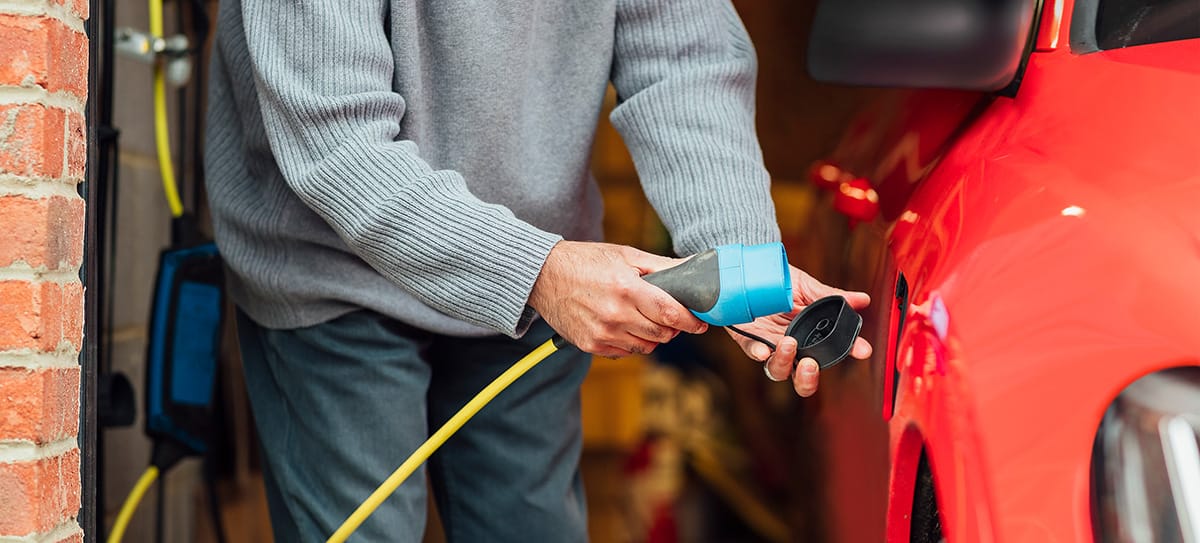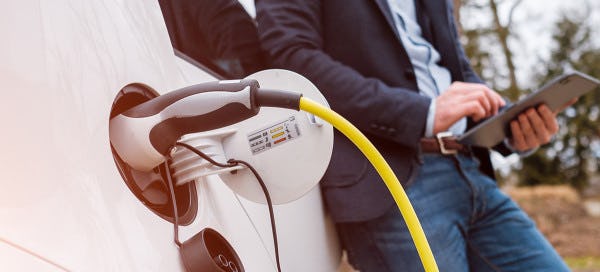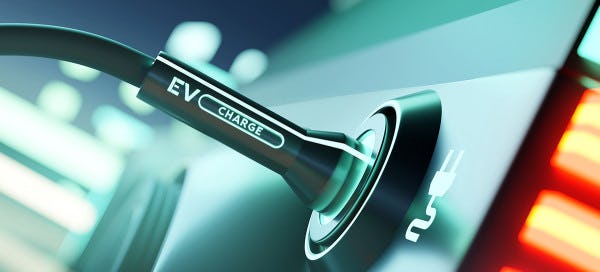Having an electric vehicle (EV) offers the flexibility of charging your car from home. Imagine that… never having to visit a gas station or go out of your way to fuel up your car. Pretty cool, right…
Of course, this convenience does require some steps (which we will cover below).
How to Install an Electric Vehicle Charging Station
While you can charge your EV from a standard 120-volt outlet just as you do your phone, it would take a long time to charge your car to full capacity. This is referred to as Level 1 charging and it can add about 4 miles of range per hour of charging, which may be fine for some who have minimal driving requirements and can charge overnight. For convenience and greater range, most people do choose to install Level 2 Chargers that us a 240-volt, 50-amp circuit. These higher power Level 2 Chargers can add upwards of 20 miles of range per hour, speeding up the charging process and bringing greater convenience to EV drivers at home.
To learn more about EV charging visit our blogs:
So, what are the steps to install an electric vehicle charging station in your home? It’s important to note that installing a Level 2 Charger includes a permitting and inspection process. To assure work is done safely and in compliance with code, you may want to consult with a certified electrician.
Access Your Electric Panel
Your electric panel is where electricity flows to your house and spreads to different household appliances. By unscrewing the metallic panel from the wall around the circuit breakers, you can easily access the electric panel to connect the appropriate wiring.
Make sure that your electric panel has enough available amperage to funnel to your EV charger. To future proof your charging system and make it viable for upcoming EV models with higher charging capacity, it’s recommended to designate a 50-60 amp circuit for your EV charger. That way if you get a more powerful EV charger down the road, you won’t have to redo the wiring.
Installation becomes more complex if there isn’t enough amperage to support your EV charger, and it may be best to hire a professional to add more power to your electrical panel.
Prepare Wire for the Circuit Panel
When working with your electric panel, it’s important that the main breaker is turned off so that you can safely work around the panel without risk of shocking yourself. You can then run a wire such as the Cerrowire 6/3 from the circuit panel to where you plan on putting the outlet used to connect the EV charger. You’ll want to puncture a whole in the metal casing around your circuit breakers in order for the wire to have clear access to the circuit. Leave the wire disconnected to the breaker at this point, and feed the other end of the wire to where you want to put the wall outlet.
Install the Proper Outlet
The Cerrowire 6/3 will run from the electrical panel to the outlet used for the EV charger. Common outlets for EV chargers are the NEMA 14-30, 14-50, and 6-50. Make sure that the outlet you get is compatible with the charger you’ve chosen (and that the orientation you install the outlet makes sense for your EV charger).
The outlet will have to be fastened to an electrical box. Before fastening the outlet to the electrical box, run the wire through the electrical box and then mount the electric box to the wall (it’s easier to feed the wire through the electrical box before it’s mounted). Once the wire is through and the electrical box is mounted, strip the wire casing and the individual wire coats to expose about half an inch of copper for the hot, neutral, and ground wires.
Then you’re ready to connect the exposed wire to the outlet. The black and red wires are the ‘hot’ wires and typically connect to the outlet where it is labeled X and Y. The ground and neutral wires will occupy the other two spots. Fasten the wires in place and screw the outlet case into the electrical box for a sturdy finish.
Now let’s go back to the electric panel to connect the wire to the breaker.
Connect the Wire to the 50-Amp Breaker
Take the wire coming into the electrical panel and strip it the same way you did at the other end so that copper from each of the 4 individual wires is exposed. Connect the red and black ‘hot’ wires to the breaker, and connect the ground and neutral wires to their respective locations. Once wires are connected, the main breaker may be turned back on if you don’t plan on touching the circuit panel any longer, but keep the 50-amp breaker for the EV charger off so that you can finish up the EV charger installation.
Mount the EV Charger
Now that the wire is connected, mount the EV charger so that it can connect to the newly installed outlet. Once fastened to the wall, you can plug the charger into the outlet. Go back to the electric panel, turn on the new breaker, and see the EV charger light up, signaling it’s ready for action.
Now all you need is to roll your electric vehicle in and charge away….
Important Considerations
There may be factors that make your installation process more intensive. Perhaps you need to run the wiring through conduit so that it can go outside. Perhaps your electrical panel is far away from where you’ll be charging your electric car, forcing the wire to travel a greater and more challenging distance. Perhaps you need to add additional power to your circuit panel to support EV charging. Perhaps you don’t own your home and have to consult with a landlord.
Installing a 240-volt, 50-amp circuit is a feasible project. But if you’re new to electrical work or have doubts about the installation process, you can hire a professional. A professional will also take care of the permitting and inspection process, further alleviating headaches.
Lastly, there are certain EV chargers that come with tax rebates. If hiring a certified electrician to perform the work, an energy rebate can help drive down the costs associated with installation. If you have further EV questions, visit our EV FAQ page.
Electric Vehicle Energy Plans in Texas
At Rhythm Energy, we're proud to offer EV energy plans for electric vehicle owners made from 100% renewable energy. To research and compare electric vehicles by range and price, visit our Electric Vehicle Hub.



